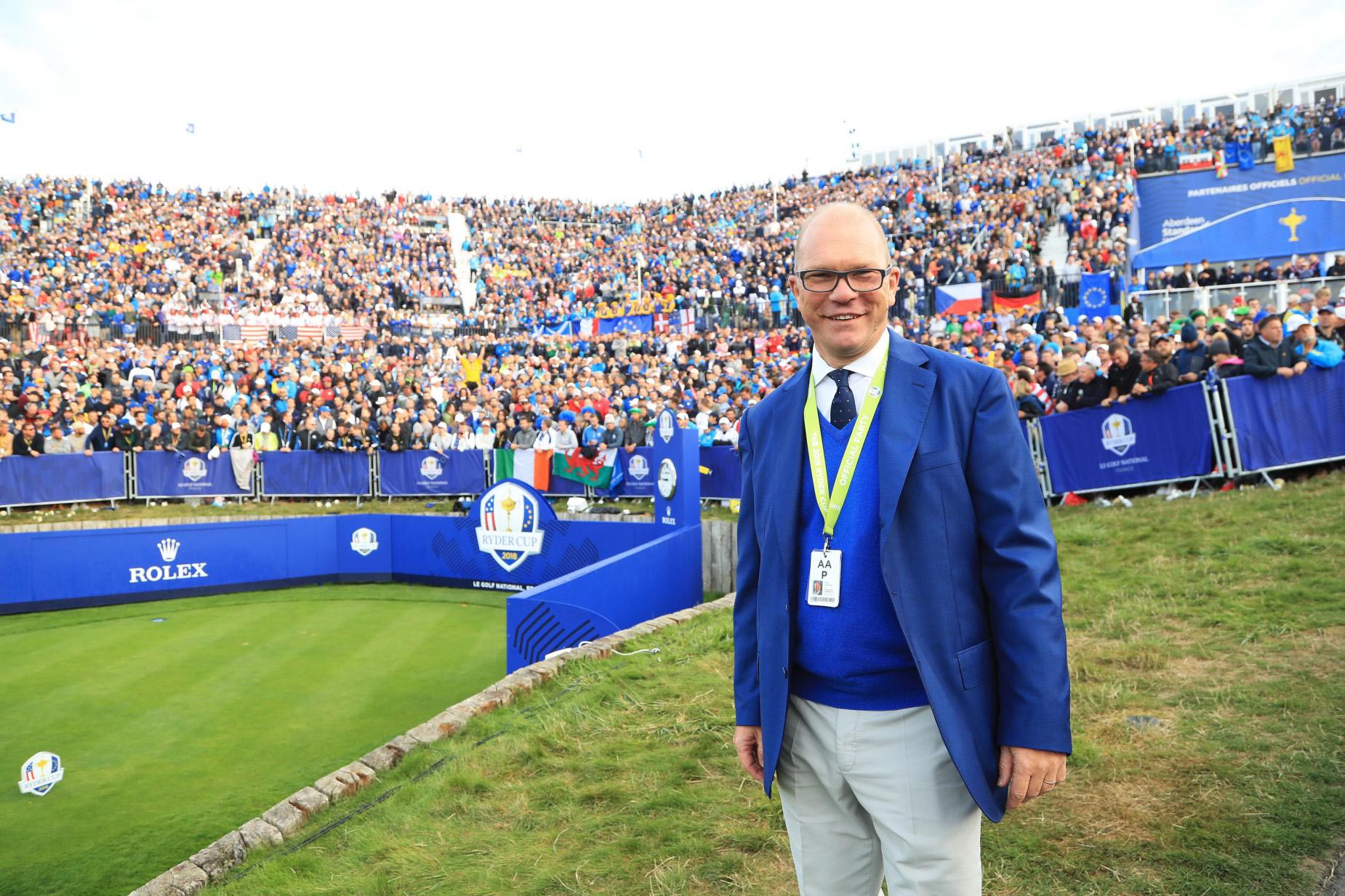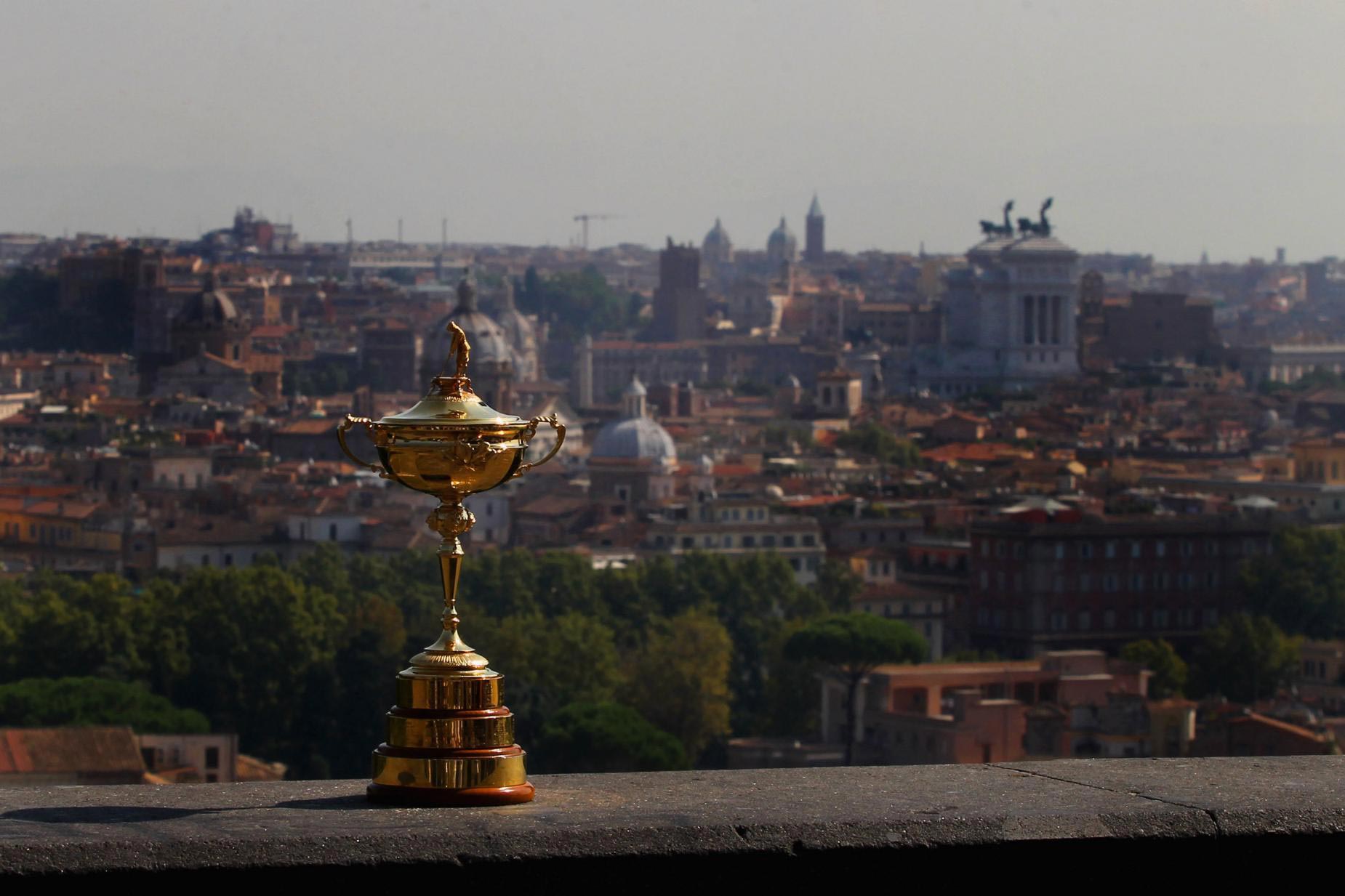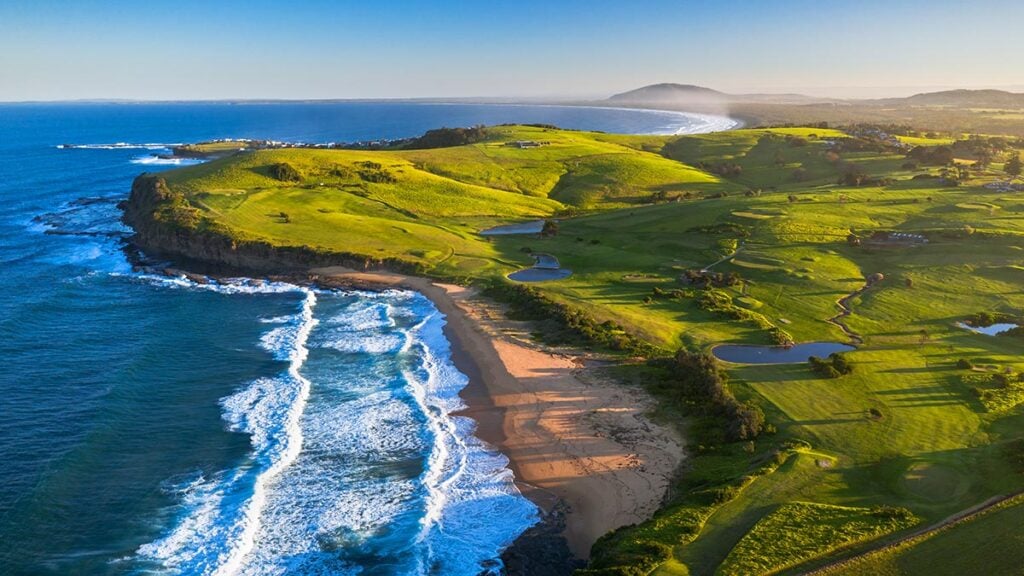*But we’re not talking about the one at Whistling Straits this September.
For those with ambitions aimed at a certain spot in Wisconsin, the Middle Eastern return of the European Tour at this week’s Abu Dhabi Championship represents the restart of a compass-crossing journey. The ultimate destination, of course, is a long way from the January warmth of the United Arab Emirates. But there is little doubt that a certain late-September date at Whistling Straits, venue for this year’s Ryder Cup, will be in the minds of many as the 2021 season commences.
Not everyone’s, though. Guy Kinnings will be heavily involved in almost every off-course aspect of the 43rd biennial contest between the Old and New Worlds, yet the European Tour’s Ryder Cup director – he also “triples” as deputy chief executive officer and chief commercial officer – is already looking forward to the 44th. In 2023, the matches will make their first visit to Italy, specifically the Marco Simone club just outside Rome.
While Kinnings clearly plays an important role in the European Tour’s day-to-day running – the former International Management Group executive was heavily involved in the negotiations that led to his employer’s “alliance” with the PGA Tour at the end of 2020 – so does the Ryder Cup. Home matches provide a large percentage of the working capital that allows the game’s second-biggest circuit to operate. So with the usual four-year gap between matches extended to five with the postponement of Whistling Straits from 2020 to 2021, the next Ryder Cup in Europe has an increased importance, at least financially.
“The extra year won’t be too significant,” Kinnings insisted when speaking to Golf Digest. “Any economic downside has been minimised by the very smart people we have working here at the European Tour. Growth in other areas of our business means we are not as reliant on the matches as we once were. The Rolex Series has helped in that respect, as has our very strong media business. Besides, we’ve had a postponement [from 2001 to 2002 in the wake of the September 11 terrorist attacks] before. So a five-year gap is less about the financial aspects than it is the opportunity to ‘do’ the event as well as it can be done.”
Warming to his theme, Kinnings, who handled the business affairs of former Ryder Cup captains Colin Montgomerie and Thomas Bjorn during his near three decades with IMG, is confident that the benefits of the 12-month postponement will outweigh any drawbacks.
“For one thing, the world will hopefully have returned to something like normality,” Kinnings said. “Specifically, the commercial markets worldwide and in Italy will make things like sponsorship and hospitality a lot easier to secure. People will be desperate for the best kind of live experience after going through what we are all enduring at the moment, which should improve our commercial opportunities. So if there is any small negative impact, we will be able to handle it, especially as I can see significant plusses by the time we get to 2023.”
The same also might be said of the Marco Simone course, the subject of much gossip – mostly negative – since it was announced as the first Italian Ryder Cup venue. Still under construction, the European Golf Design layout will surely benefit from an extra 12 months of “growing-in” time.
“There has been lots of speculation regarding the course, but right now there are nine holes open for play,” Kinnings said. “The other nine holes are looking good and will be ready later this year, in time for the Italian Open in September. So that answers the Will it be ready for the Ryder Cup? question. Does that mean everything will be perfect? No. But the pandemic hasn’t stopped the grass from growing, although some of the areas around the course won’t quite be as they will be by 2023. So it will not be ‘Ryder Cup ready’ by September [when it hosts the Italian Open]. But it will be in good shape. I think people will be pleased with what they see. And the extra year allows us more time to fine-tune everything for the Ryder Cup.”
Another possible plus, at least from a European perspective, is that this year’s Italian Open is likely to be the first of three national championships played over the course before the 2023 Ryder Cup comes around. If so, it is reasonable to assume that at least some of the home players will have familiarised themselves with its foibles. That intangible was undoubtedly a factor in Europe’s convincing 17½ to 10½ victory in 2018 at long-time French Open venue Le Golf National.

One thing that may not have quite the same impact in Italy is the “first tee” experience that was one of the highlights of the 2018 matches. At Le Golf National, a huge grandstand offered unprecedented views of not only the opening shots but three other holes as well. That opportunity doesn’t present itself in Italy, although the European Tour staff will likely have some surprises. Meanwhile, Kinnings notes that two things will always be immutable factors in the success of a Ryder Cup in Europe.
“We did an analysis after Paris,” said Kinnings with a smile. “How could it be even better? was the question. And you know what? The two things people like best are sunshine and winning. So while we will do everything we can to improve every aspect of the matches, it helps when the sun comes out and it helps when we win. So the weather is important. But winning and losing is in the hands of the captain and his players. All we can do is provide the perfect platform.”
On that front, Kinnings is confident Marco Simone’s proximity to one of the world’s great cities will bring its own benefits. “[Being so close to the centre of Rome] will allow for certain unique things to happen. It is one of the most beautiful cities on the planet, which opens up possibilities and opportunities. They will be a strong feature of the week. The Italians are experienced in hosting big sporting events. It will be a unique experience. Yes, we want to grow the game. But we want to showcase the Ryder Cup, too. And Rome is well-equipped to do that.”

“I have no idea who will be captain in 2023, but I can say with some certainty that we have an embarrassment of riches in that department as we move forward,” Kinnings said. “Prominent players are going to miss out because we have so many great candidates, so many who would be so good in the role, which is both fortunate and unfortunate. But the bottom line is that the backroom team, whatever and whomever it is, will pull together in the same way as the players always do.”
Indeed, amid all of the current uncertainty, a strong degree of camaraderie is something Europe – winners of nine of the past 12 Ryder Cups – can absolutely rely on. On that front at least, there is no middle ground.




